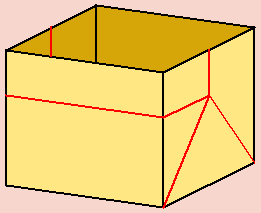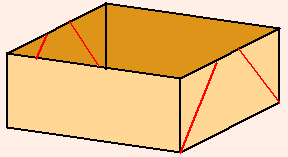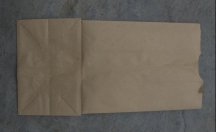The humble brown paper bag, which you might use to carry lunch or lug groceries, is a remarkable contrivance. It can stand upright by itself. You don’t need an extra hand to hold it open while you fill it. Yet it readily folds flat for easy storage. Fitted with handles, it becomes a handy shopping bag.




All this comes from an ingenious set of folds performed on a tube shaped from a roll of paper to produce a flat-bottomed bag.
Suppose, however, that you had a bag made of a very stiff material, perhaps steel or plastic plates, and that each crease was some sort of hinge. In this case, you wouldn’t be able to collapse the bag into its flat configuration.
It turns out that, given the existing creases, it’s impossible to fold a grocery bag flat without bending the facets. At the same time, the fact that the facets of a stiff paper bag resist bending and crinkling help keep the bag open or closed.
This was one of the discoveries made by Devin Balkcom, who now heads the Dartmouth Robotics Lab. It came up in the course of designing a robot that could do origami—fold pieces of paper into simple figures, such as an airplane or a hat. Robotic origami folding was the subject of Balkcom’s 2004 Ph.D. thesis at Carnegie Mellon University.
Much of Balkcom’s thesis involves an analysis of what sorts of origami can be rigidly folded by a robot. In “rigid” origami, the paper must stay rigid and flat—as if the facets were steel or plastic plates connected by hinges.
Erik D. Demaine and Martin L. Demaine of the Massachusetts Institute of Technology also have a strong interest in folding and origami. Independently, they, too, observed that a grocery bag can’t be (mathematically) folded flat (or unfolded from its flat state). They collaborated with Balkcom on a report, presented last fall at a workshop on computational geometry, devoted to folding paper bags.
General origami foldings allow continuous bending and curving of the paper. “It is known that essentially everything can be folded by a continuous origami folding,” the researchers report, “but that . . . is not the case for rigid origami.”
In the context of rigid origami, Balkcom and the Demaines prove that a grocery bag with the usual crease pattern can’t be rigidly collapsed or unfolded.
However, if the grocery bag is short, where its height is less than half its width, it can collapse flat. As seen in a collapsible department-store gift box, this occurs because the 45-degree creases on the sides of the bag don’t intersect.
This suggests a strategy for folding a tall grocery bag. The idea is to add creases to allow the bag to be telescoped until it’s short enough to collapse flat.
Indeed, Balkcom and the Demaines prove not only that a short grocery bag can be rigidly collapsed flat but also that a tall grocery bag can be collapsed flat with the addition of finitely many creases. Their paper provides a step-by-step illustration of how their procedure for “shortening a rectangular tube” would work.
The final flattened configuration, however, is nothing like the standard flattened form of a grocery bag.
This then leaves the question of whether a collapsed tall grocery bag can be unfolded with the addition of a finite number of creases. Balkcom and the Demaines conjecture that it is possible, and they suggest a crease pattern that would allow the unfolding of an already-folded paper bag.
There’s no proof yet that it really works, however.
In the meantime, in grocery stores all over the world, people continue to fold and unfold paper bags, rarely pausing to ponder the wonder of their everyday actions.






